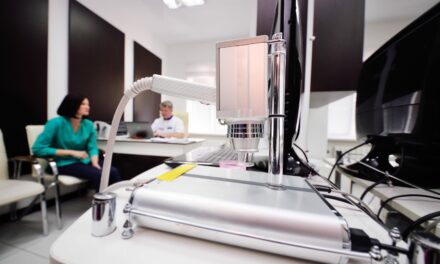Diagnostic imaging in dermatology has undergone advancements, enhancing diagnostic accuracy and improving patient outcomes through technologies from dermoscopy to optical coherence tomography.
Diagnostic imaging in dermatology has undergone significant evolution over the past few decades. From the basic use of dermoscopy to advanced imaging techniques like confocal microscopy and optical coherence tomography (OCT), the field has seen advancements that have not only enhanced diagnostic accuracy but also transformed patient care.
Dermoscopy: The Foundation of Dermatological Imaging
Dermoscopy, also known as dermatoscopy or epiluminescence microscopy, marked the beginning of modern imaging in dermatology. This non-invasive technique allows for the visualization of subsurface skin structures that are not visible to the naked eye. Initially used for the examination of pigmented skin lesions and melanoma detection, dermoscopy has substantially reduced the need for invasive biopsies by improving diagnostic accuracy.

Advancements in Non-Invasive Techniques
Following the widespread adoption of dermoscopy, there was a surge in the development of other non-invasive imaging methods. Each of these technologies brought a new dimension to dermatological diagnostics:
- High-Frequency Ultrasound: Utilizing sound waves, high-frequency ultrasound provides detailed images of the skin’s subsurface layers, aiding in the diagnosis of skin cancers, inflammatory diseases, and soft tissue disorders.
- Confocal Microscopy: This technique offers real-time, high-resolution imaging, akin to a “virtual biopsy.” Confocal microscopy is particularly valuable for tracking skin disease progression and response to treatment without physical tissue removal.
- Optical Coherence Tomography (OCT): Similar to confocal microscopy but using light waves, OCT provides cross-sectional images of the skin. It’s especially useful for diagnosing basal cell carcinoma and assessing its margins.
Impact of Technological Innovations on Patient Care
The advancements in imaging technology have not only improved diagnostic precision but also significantly enhanced patient outcomes. Earlier and more accurate diagnoses have led to more effective treatment plans, reduced need for invasive procedures, and better disease monitoring. Moreover, these imaging techniques have facilitated educational opportunities and greater patient-physician engagement by allowing clearer communication of conditions and treatment effects.
The evolution of imaging technology in dermatology continues to improve the field’s diagnostic process and patient care. As technology advances, the integration of these imaging techniques with digital tools and artificial intelligence promises even greater strides in dermatological diagnostics and therapy management.



